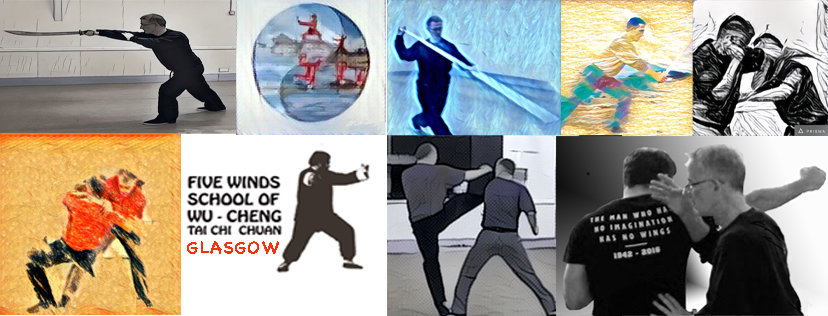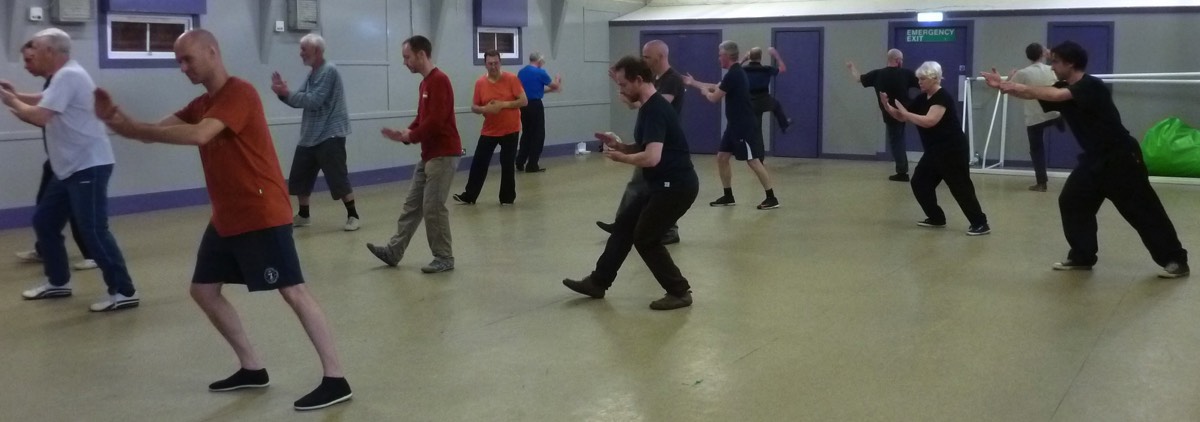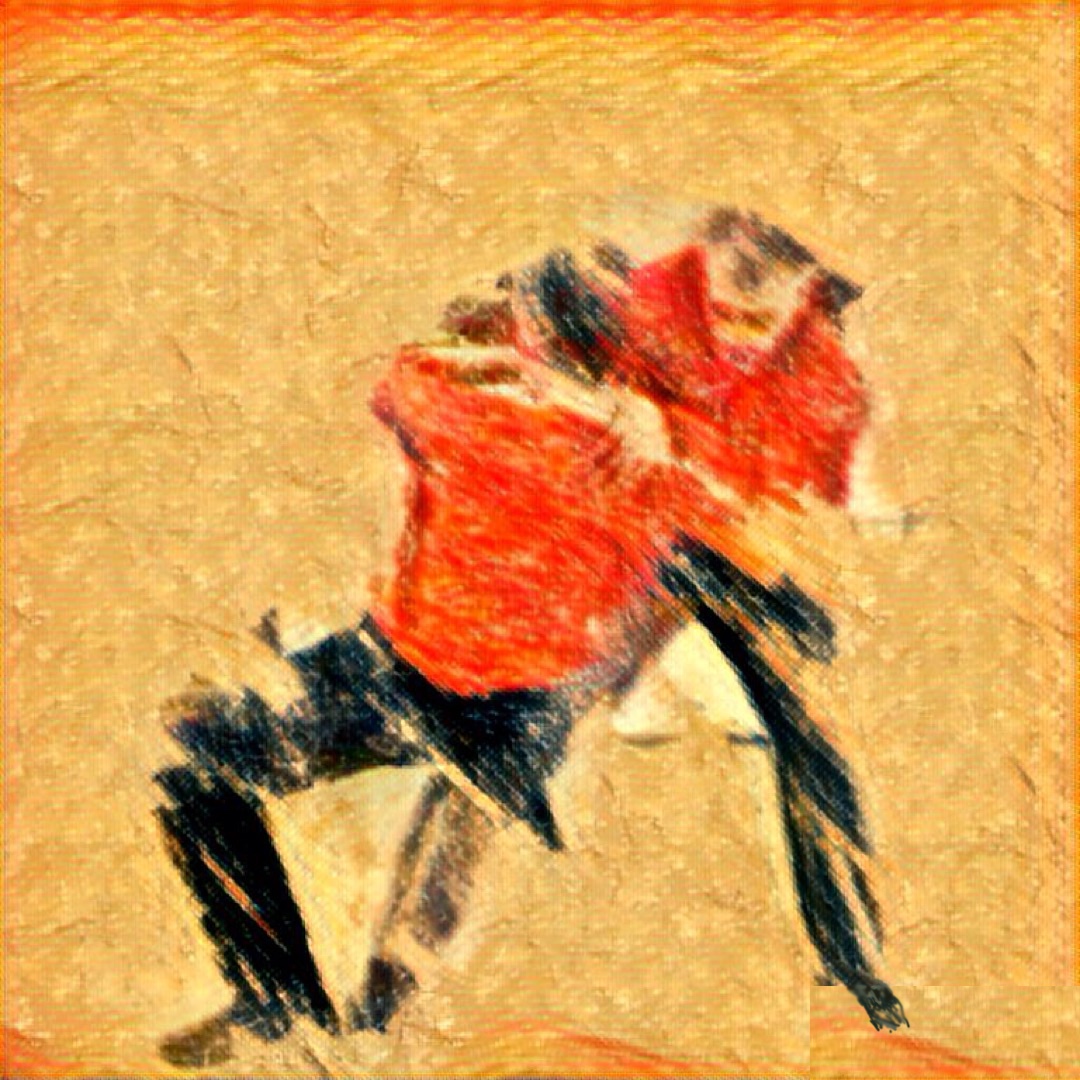…..Information about Tai Chi Chuan and Five Winds…..
-
What is Tai Chi Chuan ?
Open or CloseA very brief introduction……..
T'ai Chi Ch'uan is a Chinese martial art. Often referred to as simply Tai Chi, it is probably best known by the hand form, a set of inter-linked postures performed in continuous, flowing movements. However, Tai Chi also includes many other aspects, eg weapons forms, various push hands partner work, martial training routines, application & self defense, etc.
Tai Chi is practiced extensively around the world for the purpose of health and relaxation alone. Regular daily practice can improve co-ordination, concentration, confidence, self awareness, general fitness and health. However, Tai Chi offers a wider agenda for those interested in martial application and self defense, and in the study of theory.
Tai Chi requires relaxation during practice, important to effective application, but also recognised as beneficial to health with regular and prolonged practice. It is based upon the principle of Yin Yang theory - for example, soft overcoming/blending with hard, inner firmness and outer softness, or response to change. This principle leads directly to the method of martial application. Tai Chi Chuan is often described as the principle in action.
The origins of Tai Chi Chuan are not entirely clear, and reportedly date back to a Taoist monk, Chang San Feng (born Song Dynasty circa 1200CE). There are influences from other areas of Chinese culture beyond Taoism however, for example military, Chinese Boxing Arts, Confucianism, and more. (These influences are reflected in The Tai Chi Classics, a must for serious practitioners). Tai Chi Chuan is an effective means of self defence if diligently practiced, but further study can lead to thinking beyond that of simply fighting.
It is probably fair to say Tai Chi practiced today emerged over the 19th / early 20th century, the best known styles being developed through family lineage in the Chinese tradition of martial arts - Chen, Yang, Wu, Sun, Hao.
To understand the place of Five Winds School, please visit the Origins Page. -
Introduction to the Glasgow class
Open or Close Instructor Stephen Douglas
Instructor Stephen Douglas
We are very fortunate to have had passed down a complete martial training in the traditional vein, and every effort is made in the teaching to respect that. (The style origin / background can be found on the Origins Page).
The overall curriculum is based upon a progressive learning of the five aspects of Tai Chi Chuan, as reflected in the school name, and explained in more detail in the next question below.
Students begin by learning the Hand Form (Wu-Cheng style) , firstly in a broken down “square form”, and progressing to the round form. This is a “long” form, typically lasting around 15 - 20 minutes during normal practice, and is the foundation of Tai Chi learning. A number of standing exercises are also introduced early in classes. Students are progressively introduced to the eight styles of pushing hands exercises, and to free pushing. Push hands partner work is good exercise in its own right, but also supports martial learning (eg footwork, distance, first touch, weight distribution, centre of balance, soft approach). Self defence and practical application are normally studied after gaining some competence in push hands. In time, martial drills are introduced eg San Shou, Five Elements, etc, and the 48 San Shou.
Students are progressively introduced to the eight styles of pushing hands exercises, and to free pushing. Push hands partner work is good exercise in its own right, but also supports martial learning (eg footwork, distance, first touch, weight distribution, centre of balance, soft approach). Self defence and practical application are normally studied after gaining some competence in push hands. In time, martial drills are introduced eg San Shou, Five Elements, etc, and the 48 San Shou.
Beyond hand form, progress is made to weapons forms, Spear, Broad Sword & Straight Sword. Both Form and application are studied. Forms introduce new challenge in fitness and movement, and while most of us don't carry a sword around, in practical terms a brush pole, umbrella or walking stick could all be used. The final aspect is Nei kung. Classes are typically made up of a wide range of experience, age and gender, and have a martial focus. Classwork should form only a small part of overall practice and study to affect progress and to achieve real benefit. The rate of progress when beginning is largely down to the diligence (and sometimes prior experience) of the student. The opportunity to refine lasts a lifetime.
Classes are typically made up of a wide range of experience, age and gender, and have a martial focus. Classwork should form only a small part of overall practice and study to affect progress and to achieve real benefit. The rate of progress when beginning is largely down to the diligence (and sometimes prior experience) of the student. The opportunity to refine lasts a lifetime. -
The Five Aspects of Tai Chi Chuan
Open or CloseThe Hand Form
 Perhaps the most widely practiced part of Tai Chi Chuan, the hand form teaches correct posture, co-ordination, proper breathing, focus, continuous movement and relaxation. In basic terms, each posture relates to at least one martial application. Variation in application arises through understanding the principle in action.
Perhaps the most widely practiced part of Tai Chi Chuan, the hand form teaches correct posture, co-ordination, proper breathing, focus, continuous movement and relaxation. In basic terms, each posture relates to at least one martial application. Variation in application arises through understanding the principle in action.
The Hand Form is normally a key part of a daily practice routine.Push Hands
 Pushing Hands exercises are generally intended as two person training. The main purpose is to develop sensitivity of touch, understanding of distance and weight shift, centre of balance, and footwork.
Pushing Hands exercises are generally intended as two person training. The main purpose is to develop sensitivity of touch, understanding of distance and weight shift, centre of balance, and footwork.
There are eight major styles of pushing hands and open the first step to using Tai Chi Chuan as a martial art, as well as forming part of regular training. The intention in application is to touch, deflect and counter (as one body movement), using complimentary footwork as appropriate, underpinned with softness and technique as opposed to hard muscular strength. Push Hands supports this approach, and again should be practiced in a relaxed manner.
In addition to the eight styles (Four Corners, Reeling Silk, Fu Yang, Zhou Lu, Seven Stars, Nine Palaces, Da Lu, and Cai Lang), Free Hand Pushing forms part of training. It is arguably not a 'style' as it follows no pattern, and forms part of competition Tai Chi.
The Tai Chi Classics refer to the hand form as a vehicle to ‘knowing yourself’, and push hands as ‘knowing others’.Application / Self Defense

 Each posture in the Hand form has at least one practical application. Following on from Pushing Hands, the same principle is used in self defence, where an attack must be met with softness (relaxed) and countered with the appropriate footwork, technique and power. The system also teaches various drills to build tai chi technique in application and as stand alone methods, and conditioning techniques.
Each posture in the Hand form has at least one practical application. Following on from Pushing Hands, the same principle is used in self defence, where an attack must be met with softness (relaxed) and countered with the appropriate footwork, technique and power. The system also teaches various drills to build tai chi technique in application and as stand alone methods, and conditioning techniques.
The techniques within the weapons forms are also practiced.Weapons



The traditional weapons of the imperial guard, sabre, straight sword and spear, are taught in Five Winds.
The sabre is a short range circular weapon with a single cutting edge, allowing it to be used close to the body for defensive purposes. It is sometimes identified with nurturing shen (spirit).
The straight sword is double edged and is a far more delicate weapon which employs a much more subtle technique. Reputedly the most difficult to master, it is associated with the development of chi.
The spear form is the shortest of the weapon forms with only fifteen styles, and is traditionally associated with wisdom.
Each weapon must be seen as an extension of the body so that the practitioner and the weapon become one. In this way all forms, whether weapons or hand form, inform each other, and together build understanding of Tai Chi principle generally.
In practical self defence terms, these weapons can be substituted with a walking stick, umbrella, brush pole, etcNei Kung - Internal Strength
 Nei Kung - 'Internal Strength'
Nei Kung - 'Internal Strength'
The internal strength of Tai Chi consists of two sets of twelve exercises, one Yin and one Yang. The purpose is to build the intrinsic strength so that the body (and mind) becomes more resilient and is the internal firmness that balances the outer softness. -
Five Winds background
Open or CloseInformation on the background of the School, and Tai Chi origins generally can be found in the Origins Page, along with some interesting historic video.

